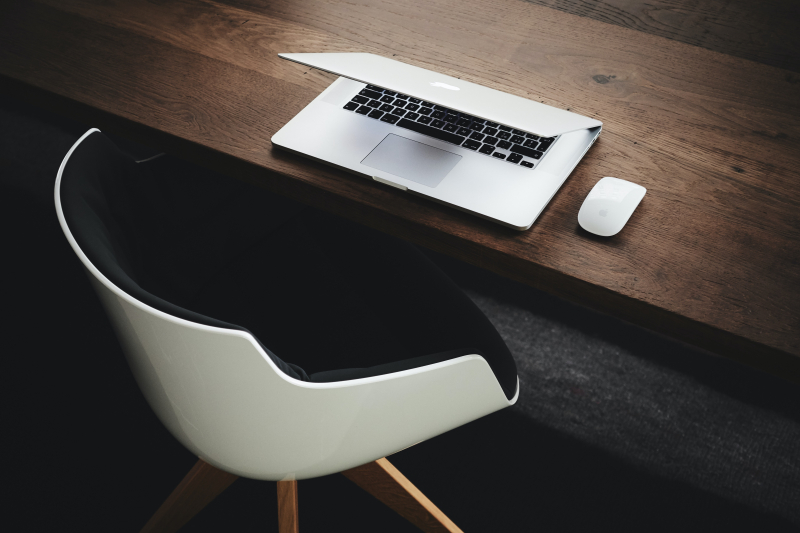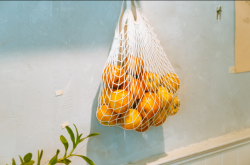Prepping up
One of the trickiest things about digital clutter is its very nature. Since it’s not something material, it’s quite hard to get a clear idea of what it is, or how it affects your life. Thus, the thing you really have to do before cleaning up space on your devices or reading into various decluttering techniques is to know what you’re dealing with and decide why you want to declutter.
The simple and obvious way to describe digital clutter is as files you amass on either your devices or in the cloud – quite similar to clutter in the real world. I find this approach quite lacking: if that were the case, decluttering would’ve been most simple, since deleting files takes mere seconds. Another definition of digital clutter is the disorganization of your data, files and digital devices. Although this one’s a lot better, it still speaks of digital clutter as something static – while in my experience, the main issue with it is what it does rather than what it is. Having analyzed my failed decluttering attempts, I came up with quite a vague, but yet viable definition of my own: digital clutter is everything digital that hinders your efficiency. While the wording could’ve been better, this take on the issue offered me a whole new perspective on what I was about to do.
After I figured out what I’m dealing with, answering the question of why I want to declutter was easy: I wanted to declutter to make my digital space – and, finally, myself – more efficient. By the way, if you are considering doing a digital cleanup yourself, I strongly advise you to decide on your purpose before you start reading into useful tips and other people’s experiences: keeping your goal in sight helps you stay on the right track. At the very least, not all of the decluttering techniques may align with what you personally are trying to achieve.
As I had already done enough research into decluttering techniques and gained some experience from my previous attempts, all I had to do to begin was just one thing: schedule it. I decided that my project was to take one week, no more than an hour a day – and this is how it went:
Day 1: Making a detailed plan
While this seems like something that should’ve been part of my preparations, I decided to make it my first-day assignment. I knew that as with any change, I would be having doubts about decluttering; much as with physical clutter, I wouldn’t want to let go of things I got used to, and would miss them once they’re gone. This could discourage me from going on, so I thought that once I begin decluttering, I would just follow a course of action without even thinking of whether it works or not, suppressing any second thoughts – so I gave the plan some thought, drew it on a blackboard, and promised myself to follow it no matter what.
Day 2: Starting out
In terms of lengthy undertakings, I believe that it’s best to begin with something simple yet immediately effective. I decided to start with all things smartphone, since this device is something that haunts almost every minute of my life. Cleaning up old files took mere seconds, but with my new understanding of digital clutter, I had a few more things to do.
In terms of personal efficiency, the issue is not with how well your smartphone works, but rather how much of a distraction it is. While I’m not a great fan of news feeds or social media, I still have the habit of rather pointlessly looking up things on the web or simply checking for messages every once in a while. So, well in line with some of the best advice I ever got on breaking a bad habit – “make it difficult” – I removed all but the essential icons, grouped the latter, and made it so that I had to swipe the screen to access them. Simple as it is, this proved very effective: when dealing with something that’s supposed to be user-friendly, every extra action counts.
The other thing I did was personalize – or, actually, de-personalize – my smartphone in such a way that it looked as simplistic and unattractive as possible, and that seemed to work as well.
Day 3: On with the basics
After reorganizing stuff on my smartphone, I went on to do the same with my computer. This called for a more subtle approach: making it less easy to use would've hindered my work, which, in turn, would’ve gone against the purpose of this project.
So, I opted for an entirely different method. Rather than deleting stuff and making my workspace less attractive, I set up additional user profiles, each for every purpose I use my computer for. I organized them in such a way that each looked clean, neat, and was perfectly fit for doing one single task (work, study, etc.). Everything that could be a distraction, I left on my initial profile, to which I set a very long and random password that’s a real pain to type in – making it hard to log in.
Day 4: Pressing on
Having made the basic improvements that should’ve served as a warmup, I proceeded with what became the most exhausting part of my decluttering project. The one thing that got me thinking about digital clutter was the mess I had in my inbox and browser: a multitude of unread emails that I couldn’t sort out, old subscriptions, and a great load of bookmarks that all seemed very important.
Unfortunately, there was no way I could facilitate such a cleanup, so I had to go through them one by one – which is when my “no thinking, just doing” policy proved to be extremely useful. I split my time limit into several shorter runs, and worked as quickly as I could – and even though I completed this step well within an hour, I still felt totally drained afterwards.
Day 5: Review
My initial plan for this day was to make it a day off, especially since I was expecting day four to be the hardest. Nevertheless, I couldn’t get my mind off the project, especially since I started to question the whole idea of it. To make matters worse, I started to experience “withdrawal symptoms,” like getting frustrated with how unhandy my phone had become or having to switch user profiles every time I wanted to do something different on my PC. As a distraction, I decided to review what I’d already done and smooth out some rough edges, like bringing back some apps and notifications that I felt I needed for sure.
Day 6: Sorting old data
At last, it was the time to deal with what is commonly seen as digital clutter: old data. While I had my more recent files stored in a more or less organized manner, the rest was lumped together in such a way that sorting it anytime soon seemed completely impossible. The sheer scope of the problem discouraged me from even trying. To make matters worse, I couldn’t bring myself to delete it altogether, as I knew that there could be important files mixed up in this mess.
Luckily, I remembered a trick that could at least help me get started. I moved a portion of the files to a special folder and put a date on it. The idea was simple: on that date, whether I check it for anything important or not, I would delete the folder and make a new one, with the next portion of data, and a new deadline. Getting ahead, I have to say that this really worked, and has since helped me make considerable progress with sorting old files.
Day 7: Making it last
As for the final day of my week-long project, I decided to focus on something that could help me preserve whatever results my experiment would bring. From my past experiences, I knew that it doesn’t take much time for my digital space to get cluttered again, no matter how clean I made it. So, I spent the last hour of my decluttering project drafting a checklist for tracing my progress – and scheduling follow-ups.
Now, you might be interested in my results. Three weeks after the end of my digital decluttering experiment, I can’t say that I’ve gotten rid of digital clutter. Yet, it has become a lot more manageable, and there’s definitely less of it. So, was it worth it? Definitely. And I advise you to try it, as well.




